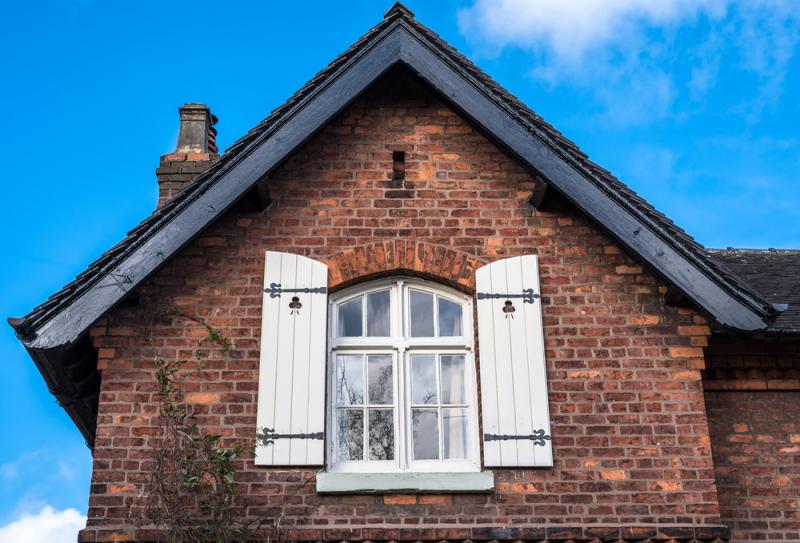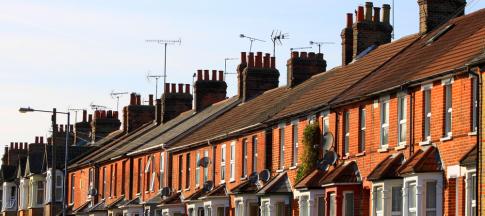
To protect your home and its contents from all sorts of potential incidents, you need home insurance.
No matter how cautious we are, every home is susceptible to incidents like fires and extreme weather, burglary and theft, or boiler break down and other home emergencies.
Listed buildings are no exception. If you own a listed building, you can get home insurance that's tailored to your home.
It'll need to take into account the building’s listing status, historical and architectural features, as well as fixtures, fittings, and individual contents.
What is a listed building?
In the UK, listed buildings are structures with architectural, cultural or historical importance. This means that any repairs, maintenance and enhancements may cost considerably more compared to those on a non-listed building.
A listed building may be considered significant due to its national interest, its age or rarity, its aesthetic appeal, or because it represents a select few of its kind still standing.
You have to get permission from the local council or other government authority if you wantto make any changes to a listed building, such as demolition, extensions or alterations of any kind.
What are the categories of listed buildings?
There are three main categories of listed buildings in England and Wales:
- Grade I - buildings of exceptional interest, comprising 2.5% of listed buildings
- Grade II* - buildings of particular importance and of more than special interest, comprising 5.8% of listed buildings
- Grade II - buildings of special interest comprising 91.7% of all listed buildings.
Homeowners of listed buildings are therefore most likely to own a Grade II structure.
How do I know if I own a listed building?
There are many listed buildings in the UK. For example, there are 500,000 listed buildings on the National Heritage List for England (NHLE) alone, and a listed building can include several buildings or units at one time, like a row of terrace houses.
Scotland, Wales and Northern Ireland also have their own lists: Historic Environment Scotland, Cadw, and the Northern Ireland Environment Agency. Listed building status can also be established through local authorities.
You can find out if your property is listed by searching on the website of the relevant organisation.
Why is home insurance different for listed buildings?
If your listed building needs any repair or maintenance, it’s likely that specific materials and expert work will be required to ensure that the building maintains its listed status and does not lose any monetary value.
Consent from Historic England, Historic Environment Scotland or Cadw (in Wales) or any other necessary authority will also be required before any repairs or maintenance can take place.
Insurance for listed buildings is therefore usually at a higher premium compared to newer homes and non-listed buildings, particularly if the building has uncommon or archaic features like a thatched roof.
Some insurers offer opportunities to keep premiums down by including a higher excess charge. But this may not be the best option if, for example, you live near water or own a property that is particularly old or susceptible to a specific type of damage.
This is why it’s so important to carry out careful research on your listed building before purchasing an insurance policy.
Our home insurance includes a combined policy, where both the building itself and its contents are insured. By choosing a combined insurance policy, you can rest assured that everything ‘under one roof’ is covered.
As well as saving money, you save yourself the hassle of taking out two separate home insurance policies.
We don't offer cover for Grade I or Grade II* listed buildings.
What to do if you’ve bought a listed building
Owning a listed building is seen by many as a great privilege, but it also carries obligations. It's important to find out all that you can about the building’s history, not only for your own knowledge and interest, but so that you understand how best to look after it.
Knowing when and by whom it was built, what it is made from, accurate rebuild costs and what repairs have been undertaken so far, are all vital pieces of information. You’ll more than likely have to share this info with your insurer as well.
To get an idea of potential costs for any work on your listed building, or to get an overall understanding of the value of your listed building and its heritage, you may wish to pay for a specialist valuation by a quantity surveyor before getting a quote from an insurer.
Making changes to my listed building
Listed buildings can be altered and enhanced, provided permission is granted and the required work is thoroughly researched.
It's widely accepted old buildings need modern heating appliances and such in order to provide liveable conditions for homeowners.
But be aware that many old homes need specific care, e.g. rendering a house built before 1910 requires the use of lime mortar as cement mortar or plastic based paints on the interior can cause damp and rotting timber.
It's is always best to seek professional advice before you carry out any work on your listed property.
Interested in what else can impact your home insurance price alongside your listed status? We've got you covered.


